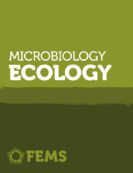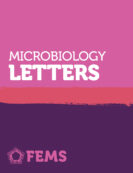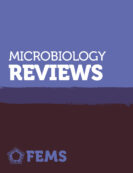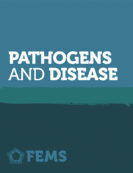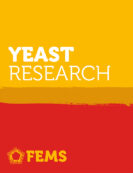A Guide for Scientists: Preventing COVID-19 Misinformation
While facing down the COVID-19 pandemic, we are also facing a pandemic of misinformation surrounding COVID-19. This misinformation could be about the SARS-CoV-2 virus, the COVID-19 disease it causes, or the public health advice given by international organizations and local governments to limit the impact and spread of this disease.

With the spread of misinformation, people tend to take on wrong health care measures, downplay the seriousness of the crisis; all of that leading to more harm than good. This article is a guide for scientists to act as an advocate for high quality information in their own networks and to challenge misinformation. Its aim is maximise the impact of science communication surrounding COVID-19 to make it as widespread and as effective as possible.
As a community of microbiologists, we are the often the very people best placed to help inform, guide, and confront wrong information consumed and shared in our own networks, both personal, and on social media about microbes, viruses, and disease.
We want to get our community of scientists engaged, talking, and interacting online with everyone they know so we can help to minimise the spread of misinformation, and maximise the consumption of high quality information about COVID-19.
However, it is not always easy knowing exactly how and when to initiate a constructive dialogue with people. At first, it might feel pointless being a keyboard warrior for science, but if you don’t speak up, someone else with less expertise or dubious intentions will do so instead…
If this is your first time tapping your toe into science communication waters, we give you here some guidelines, some DO’s and DON’T, to ensure people have the right information at their fingertips around COVID-19.
But ultimately, you just need to get out there (online) and speak up, and say your piece. You might not be perfect as you start, but that’s okay. We need as many scientists as possible speaking up and learning how to engage with the public along the way.
Fighting Misinformation Online: DOs and DON’Ts
The first important thing that you (and maybe your imposter syndrome) need to realise is that, as a scientist, you have some of the best access to knowledge, and the trust and respect of people who know you well. These are your two most important assets when fighting misinformation, so…
DO help pour cold water on dubious claims – You know what sources of information are trustworthy. And what is obvious to you, might not be to other people, so politely point out the correct places to go for good quality information, and gently explain why a source or article is untrustworthy. Be visible and engage with people.
DO’s explain to people in a polite and measured way why the received information cannot be trusted – For example, bad language or grammar, flaws in reasoning, missing information, dubious source material, hidden agenda, or poorly researched.
DO forward people to the best places for good information on COVID-19 – A more comprehensive list of sources and papers can be found on our Expert Update on SARS-COV-2 and COVID-19, but good very places to link lay-people to are:
- Science Media Centre UK
- Science Media Center Germany
- Science Media Center Canada
- Science Media Centre New Zealand
- Australian Science Media Centre
- Full Fact, the UK’s independant factchecking charity
- The World Health Organization (WHO)
- European Centre for Disease Prevention and Control (EDCD)
- Centre for Disease Control and Prevention (CDC)
- Experts you know! – you may work personally with some very talented individuals who can explain aspect of the science very well, so bring in the people you know too, make it social and friendly.
DO provide a link to a good article, a well-researched source, or an interesting and accurate video – often people want confirmation from more than just one person, it’s good to present the scientific view as part of a consensus and not just one opinion. It’s also worth remembering other good people have taken a lot of time to explain this well, so make use of their best efforts before duplicating the work yourself!
DO work with Science Communicators to get your expert views written up in an accessible format (you can email ours! Joseph Shuttleworth: joseph.shuttleworth@fems-microbiology.org ; or independent science communicator: Sarah Wettstadt: sarah.wettst@gmail.com– you might have the right knowledge, but not the most effective delivery channels, to make the biggest impact. You can also ask us further questions about social media communication. So, let’s team up and make something better than the sum of its parts! Here’s an example of work FEMS did with Prof. Alfredo Garzino-Demo on COVID-19. Science moves fast, so we would always be open to producing new expert updates from our community of microbiologists.
DO be brave and reach out to other people with other skills to help tackle misinformation as a team! – Take over a SciComms account, talk to journalists, write something for a news or online outlet. You can use your own social media account if you have many followers and help to educate people. Listen to them and answer their questions.
![]()
DO use social media channels to talk to people. We cannot recommend this highly enough since everyone is turning to social media for information or entertainment. Use the momentum to engage into conversations with your followers and listen to them and answer their questions. And if you give this a try and communicate science yourself.
DO use simple and clear language when explaining the science, without dumbing it down, and be patient with your listener – Let them ask you questions and respond kindly. Analogies and simple graphs and images often work well in getting across complex points without using complex words..
DO be empathetic and sympathetic – It is hard knowing what is true with so much information flying around, and people are scared, confused, and overwhelmed – they will be embarrassed if you point out something they’ve shared is wrong publicly on their social media, so be understanding and make sure people don’t feel shamed or attacked. Always use a calm, controlled, and accepting tone. Be a person first, and a scientist second. People don’t always care what you know, but they want to know that you care.
As important is it is to know the DO’s of combating misinformation, it is maybe even more important to follow some DON’T’s as well:
DON’T overstate your expertise – Epidemiologists are not molecular virologists, and infection microbiologists are not public health experts – point people towards the right experts and sources when their expertise in an area is greater than yours.
DON’T use jargon, formulae, or complicated scientific terminology without being prepared to do a lot of further explanation of those terms (which people might not have time for), since you really want your audience to understand what you are saying.
DON’T just tell people what to do (e.g. social distancing), explain to them why it is advantageous of them that they do it or show them how what to do can have a good impact (of how it can avoid a bad outcome). While you might start to feel very comfortable in your new educating role, it is also extremely important that you…
DON’T overwhelm people with information. Know when to stop. Going on for too long, or too hard, will just put them off! And make sure that when you talk about misinformation, you…
 DON’T repeat misinformation by retweeting/sharing and thus repeating the wrong information – People tend to remember what they read, even if it is labelled as wrong information so don’t forward misinformation via social media like WhatsApp, Facebook, and Twitter. Much like the epidemiology of the real virus, cutting down on transmissions of bad information can have a huge impact later down the line.
DON’T repeat misinformation by retweeting/sharing and thus repeating the wrong information – People tend to remember what they read, even if it is labelled as wrong information so don’t forward misinformation via social media like WhatsApp, Facebook, and Twitter. Much like the epidemiology of the real virus, cutting down on transmissions of bad information can have a huge impact later down the line.
DON’T insult, belittle, shame, or embarrass people when they’ve shared something wrong, or been taken in by something misleading – Offer understanding by admitting that there is a lot of information flying around, and it can be confusing to sift through. It should be completely understandable even for scientists to be scared, confused, and overwhelmed with everything going on
This article was written by one of our Journal Social Media Editors: Sarah Wettstadt, and our Science Communication Officer: Joseph Brooks Shuttleworth.
All but one of the FEMS journals are now fully open access (OA), with one journal, FEMS Microbiology Letters remaining a subscription journal with free-to-publish and OA options. Open access is key to supporting the FEMS mission of disseminating high quality research as widely as possible: when high quality, peer reviewed sound science is open access, anyone, anywhere in the world with an internet connection, can read it.

